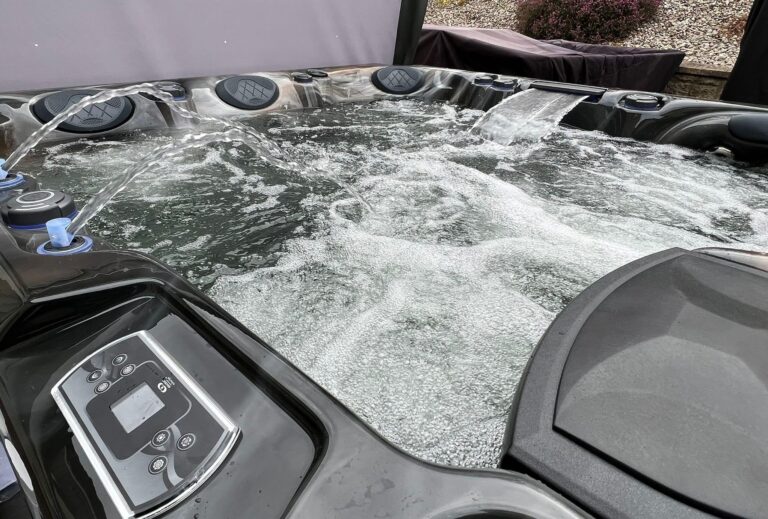A Guide to Wild Swimming: Exploring Nature’s Serene Waters
Let’s go swimming in nature! If you’ve ever wanted to feel the cool water of a lake, river, or the big ocean, come with me! I love being outside, and swimming is a great way to connect with nature.
This guide will show you how to have fun and feel good while swimming in natural places.
Why People Love Wild Swimming:
- Connecting with Nature: Wild swimming offers a unique opportunity to immerse yourself in the beauty and tranquility of natural environments. It allows you to experience the refreshing coolness of the water, the gentle current of a river, or the vastness of the ocean.
- Physical Benefits: Swimming is a fantastic low-impact exercise that works your entire body. Wild swimming adds an extra challenge due to the varying temperatures and currents, making it a great way to improve cardiovascular health and build muscle.
- Mental Wellbeing: The combination of physical activity and spending time in nature can have a profound effect on mental health. Wild swimming has been shown to reduce stress, improve mood, and boost feelings of well-being.
- Adventure and Exploration: Wild swimming can be a fun and adventurous way to explore new places. Whether you’re discovering hidden lakes or venturing into the ocean, it adds a sense of excitement and discovery to your routine.
Is Swimming in the Sea Wild Swimming?
Yes, swimming in the sea is considered wild swimming. It’s one of the most popular forms, offering vast open spaces and unique marine life encounters.
Is it Safe to Swim in the Wild?
While wild swimming can be incredibly rewarding, it’s important to prioritize safety. Always:
- Check water conditions: Be aware of currents, tides, and water temperature before entering.
- Never swim alone: Always have a buddy with you, especially in unfamiliar waters.
- Be prepared for the elements: Wear appropriate clothing and consider using a wetsuit in colder water.
- Know your limits: Don’t overestimate your abilities and start with shorter swims in calm waters.
Why Do Wild Swimmers Wear Hats?
Wild swimmers often wear hats for two main reasons:
- Warmth: In colder water, a hat helps prevent heat loss from the head, which is crucial for maintaining body temperature.
- Sun Protection: Spending time outdoors exposes you to the sun’s harmful UV rays. A hat provides protection for your scalp and face.
Does Wild Swimming Help You Lose Weight?
While wild swimming can contribute to weight loss, it’s not a guaranteed solution. However, it’s a great form of exercise that burns calories and can be part of a healthy weight management plan.
Remember, wild swimming is a fantastic way to connect with nature, improve your physical and mental health, and experience the thrill of adventure. Just prioritize safety and enjoy the refreshing embrace of the natural world!
Wild Swimming: Benefits and Risks
This swimming in natural bodies of water, such as rivers, lakes, and the sea. It is a growing trend in many countries, as people are increasingly looking for ways to connect with nature and get some exercise.
Benefits include:
- Improved physical health: Swimming is a great way to exercise and improve cardiovascular health. Cold water swimming can also help to boost your immune system and metabolism.
- Reduced stress: Being in nature has been shown to have a calming effect on the mind and body. it can help to reduce stress, anxiety, and depression.
- Increased happiness: It can be a very mindful and enjoyable experience. It can help you appreciate nature’s beauty and connect with your inner self.
- Improved mental health: It can help improve your mood, self-esteem, and overall well-being.
Risks associated:
- Cold water shock: Cold water can cause a sudden decrease in heart rate and blood pressure, leading to dizziness, nausea, and even unconsciousness.
- Water quality: Natural bodies of water can be contaminated with bacteria, viruses, and other pollutants. It is essential to check the water quality before swimming in any wild location.
- Dangers from wildlife: Wild animals, such as jellyfish, can pose a hazard to swimmers. It is essential to be aware of the nature in the area before swimming.
Safety precautions. Here are some tips:
- Swim with a friend or group.
- You can choose a safe location with clear water and no currents.
- Check the water quality before swimming.
- Be aware of the weather conditions and avoid swimming in stormy weather.
- Wear a wetsuit or other appropriate clothing.
- Take a break if you feel cold or tired.
If you are new to wild swimming, starting with a supervised session with an experienced wild swimmer is a good idea. This will help you to learn the ropes and stay safe.
This is a great way to exercise, touch with nature, and enhance your physical and mental health. However, taking the necessary safety precautions is essential to avoid any risks.

1. The Thrill of the Dive
Wild swimming is not just a physical activity; it’s an adventure that ignites your senses. The moment you take that plunge into the calm, crystal-clear waters, you’re instantly transported to a world where the cares of daily life fade away. The adrenaline rush as you explore new swimming spots is unlike any other.
2. Beyond Chlorine: The Freedom of Natural Water
One of the most liberating aspects of wild swimming is the absence of chlorine. Swimming in natural bodies of water offers a purity that can’t be replicated in a pool. You’ll taste the tang of freshwater, feel the embrace of nature’s currents, and see underwater worlds teeming with life.
3. Finding the Perfect Spot
The hunt for the ideal swimming location is part of the adventure. Whether it’s a secluded mountain lake, a meandering river hidden in a forest, or a secret cove by the sea, discovering these hidden gems is a rewarding quest. Each spot has its unique charm, inviting you to explore and create lasting memories.

4. Connecting with Nature
Wild swimming fosters a profound connection with the environment. You become acutely aware of your place in the natural world as you float on your back, gazing at the sky or swimming alongside fish and aquatic plants. It’s a humbling and awe-inspiring experience that can deepen your appreciation for the planet’s beauty.
5. Safety and Preparation
While this type of swimming is a thrilling adventure, safety should never be compromised. Always check water conditions, currents, and weather forecasts before diving in. Safety buoys and floatation devices are essential, especially if you’re new to open-water swimming. Remember that nature can be unpredictable, and preparedness is your best defiance.
6. A Sustainable Approach
Respect for the environment is paramount. Leave no trace of your presence, pick up litter if you find any, and ensure you’re not disturbing local wildlife. By practicing’s responsible swimming, you’re contributing to preserving these natural wonders for future generations.
Wild Swimming vs. Open Water Swimming
Both wild swimming and open water swimming involve taking a dip in natural bodies of water like lakes, rivers, and the ocean. However, there are some subtle differences:
Wild Swimming:
- Often emphasizes the connection with nature and the immersive experience.
- May involve swimming in smaller, more secluded bodies of water like ponds or hidden waterfalls.
- Can be more spontaneous and less structured than organized open water swims.
Open Water Swimming:
- More focused on the physical activity and performance aspect of swimming.
- Often takes place in larger bodies of water like lakes or the ocean.
- May involve organized events, races, or training programs.
Further Reading:
- Is it Safe to Swim in a Hot Tub During Your Period? Discover essential information regarding the safety of using a hot tub during your menstrual cycle. Learn about potential risks and precautions to take.
- How to Heat a Swimming Pool Efficiently: Explore various methods and strategies for heating your swimming pool while minimizing energy consumption and costs.
Wild Side of Colorado:
Explore the thrill of wild swimming in Colorado’s Rocky Mountains! This video showcases hidden swimming holes with stunning scenery and refreshing water. Learn tips for finding these gems and what to bring for a safe and enjoyable adventure.
For more reading about Healing in Style guide or for more knowing about Pools Guide.
Final Thoughts:
Wild swimming offers a unique way to experience the beauty and serenity of nature. It’s a pursuit that combines adventure, mindfulness, and a deep connection with the environment.
So, if you’re ready to leave behind the confines of a pool and embark on a journey of discovery, grab your swimsuit and explore the untamed waters waiting to be explored.
Do you prefer the immersive experience and connection with nature of wild swimming, or the structured and performance-oriented approach of open water swimming?












